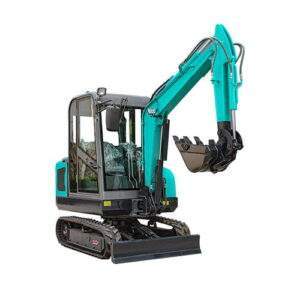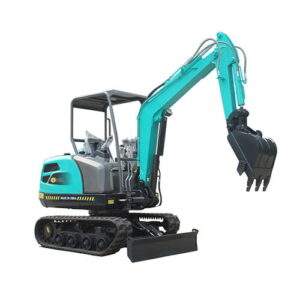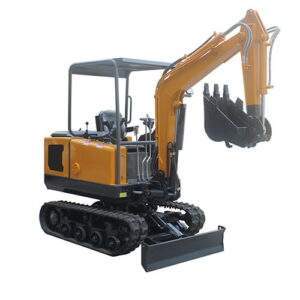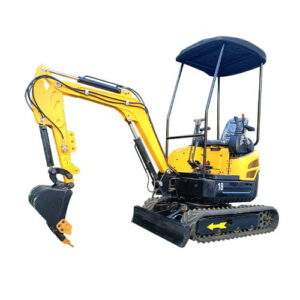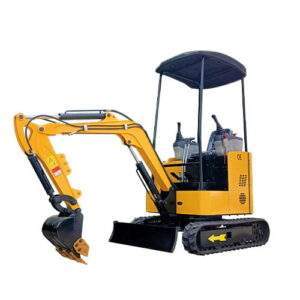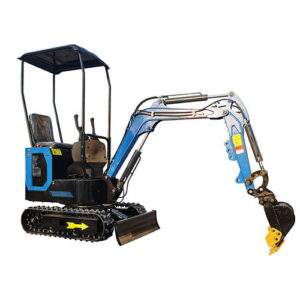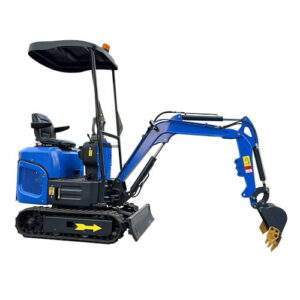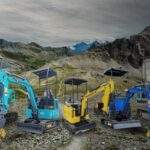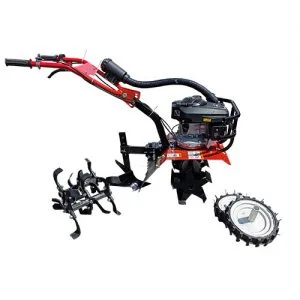Affordable Options: Choosing Cheap Mini Excavators for Your Project
Introduction
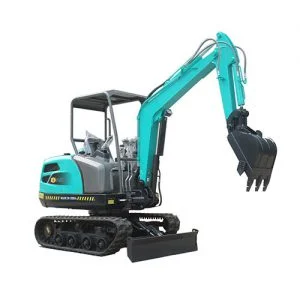
In construction and landscaping projects, the right equipment can make all the difference. Cheap mini excavators are a popular choice due to their versatility and cost-effectiveness. This guide explores key considerations when selecting a cheap mini excavators for your project.
Understanding Cheap Mini Excavators
Cheap mini excavators, also known as compact excavators, are smaller versions of standard excavators designed for maneuverability in tight spaces. Despite their lower cost, they offer robust functionality for various tasks such as digging, trenching, and material handling.
Benefits of Cheap Mini Excavators
Cheap mini excavators offer a range of benefits that make them a preferred choice for various construction and landscaping projects:
- Cost-Effective: One of the primary advantages of cheap mini excavators is their lower initial purchase cost compared to larger excavators. This affordability extends to operational costs as well, including fuel consumption and maintenance. For small businesses or independent contractors, this cost-effectiveness translates to better financial management and improved profitability on projects of varying scales.
- Compact Size: Mini excavators are designed to operate in tight spaces and urban environments where larger equipment might struggle to maneuver. Their compact size allows them to navigate through narrow alleys, between buildings, and around obstacles with ease. This capability makes them invaluable for tasks such as digging trenches for utilities, landscaping in residential areas, or performing maintenance work in confined spaces.
- Versatility: Despite their size, cheap mini excavators are remarkably versatile. They can be equipped with a variety of attachments such as buckets, augers, hydraulic hammers, and grapples, enabling them to perform a wide range of tasks. Whether you need to dig trenches, break concrete, lift heavy materials, or clear debris, mini excavators can be adapted to meet the specific demands of different projects. This versatility not only enhances productivity but also reduces the need for multiple pieces of equipment on-site.
- Ease of Transportation: Mini excavators are lightweight compared to their larger counterparts, making them easier and more cost-effective to transport between job sites. This flexibility means operators can quickly move the equipment to where it’s needed most without requiring specialized trailers or heavy-duty vehicles. Additionally, their compact size often allows them to be transported on smaller trucks or trailers, further reducing transportation costs and logistical challenges.
- Reduced Environmental Impact: With advancements in engine technology, many modern mini excavators are designed to be more fuel-efficient and emit lower levels of exhaust emissions compared to older models. This makes them a more environmentally friendly choice for construction and landscaping projects, aligning with sustainability goals and regulatory requirements.
- Improved Operator Comfort and Safety: Despite their smaller size, manufacturers prioritize operator comfort and safety in mini excavator designs. Features such as ergonomic controls, adjustable seating, and improved visibility contribute to a safer and more comfortable working environment. This focus on operator well-being enhances productivity by reducing fatigue and minimizing the risk of accidents on-site.
Selecting the Right Model
Evaluate models based on:
- Brand Reputation: Established brands offer reliability and service support.
- Customer Reviews: Insights into performance and durability.
- Warranty and Support: Coverage for maintenance and repairs.
Key Features to Consider
When choosing a cheap mini excavators, focus on:
- Engine Power: The engine power of a mini excavator plays a crucial role in determining its performance capabilities. Opting for sufficient horsepower ensures that the excavator can handle the workload demanded by various tasks such as digging, lifting, and operating attachments effectively. Higher horsepower models provide greater digging force and faster cycle times, which can significantly enhance productivity on the job site. It’s important to match the engine power to the specific tasks you anticipate, ensuring that the excavator can perform efficiently without strain, thus prolonging its operational life and minimizing downtime.
- Bucket Capacity: Bucket capacity directly influences the efficiency of material handling operations with a mini excavator. Larger bucket capacities allow for quicker loading and unloading of materials such as soil, gravel, or debris, reducing the number of cycles required to complete tasks. For projects requiring frequent movement of materials over short distances, a larger bucket capacity can significantly boost productivity. Conversely, smaller bucket capacities may be more suitable for precision work or tasks in confined spaces where maneuverability is paramount. Choosing the right bucket capacity ensures optimal performance and efficiency tailored to your specific project needs.
- Hydraulic System: The hydraulic system is the backbone of a mini excavator’s functionality, responsible for powering movements such as digging, lifting, and rotating attachments. A high-quality hydraulic system with efficient components ensures smooth and precise operation, reducing downtime and maintenance costs. Modern advancements in hydraulic technology contribute to improved control sensitivity and responsiveness, enhancing operator productivity and safety. Regular maintenance and adherence to manufacturer recommendations are essential to preserve the longevity and efficiency of the hydraulic system, ensuring consistent performance over the lifespan of the mini excavator.
- Operating Weight: The operating weight of a mini excavator determines its stability and maneuverability on various terrains. While a lighter machine enhances mobility and ease of transportation between job sites, a heavier excavator offers increased stability during operation, particularly when lifting heavy loads or operating on uneven ground. Finding the right balance between operating weight and maneuverability depends on the specific requirements of your projects. Consider factors such as ground conditions, site access, and lifting capacities when selecting the optimal operating weight for your mini excavator. This ensures safe and efficient operation while minimizing soil compaction and potential damage to sensitive surfaces.
Common Attachments For Mini Excavators
| Attachment | Functionality | Typical Use |
|---|---|---|
| Bucket | Digging, lifting, and carrying materials | Excavating trenches, loading trucks |
| Auger | Drilling holes | Installing posts, foundations |
| Hydraulic Hammer | Breaking concrete and rock | Demolition, road construction |
| Grapple | Gripping and lifting irregularly shaped items | Clearing debris, handling logs |
| Thumb | Pinching and gripping | Sorting materials, precision handling |
| Trencher | Digging narrow trenches | Installing utilities, irrigation systems |
| Ripper | Breaking up hard soil | Preparing ground for landscaping |
| Compactor Wheel | Compacting soil and gravel | Road construction, trench backfilling |
Maintenance Tips
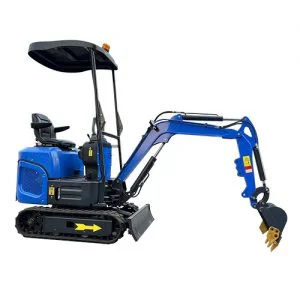
To maximize longevity and performance:
- Regular Servicing: Follow manufacturer’s maintenance schedule.
- Proper Operation: Train operators to use equipment correctly.
- Inspect Daily: Check for wear, leaks, and loose components.
Conclusion
Choosing a cheap mini excavators involves balancing cost with performance and durability. Evaluate models based on your project’s specific needs and consider long-term maintenance and support. With the right choice, you can enhance productivity and efficiency on your construction site or landscaping project.
FAQ
Q: Are cheap mini excavators durable?
A: Yes, with proper maintenance, they can be durable for various projects.
Q: Can attachments be added to cheap mini excavators?
A: Yes, most models support attachments like buckets, augers, and grapples.
Q: What’s the typical lifespan of a cheap mini excavator?
A: Depending on usage and maintenance, they can last 5-10 years or more.

